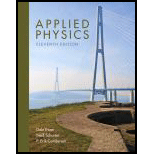
Applied Physics (11th Edition)
11th Edition
ISBN: 9780134159386
Author: Dale Ewen, Neill Schurter, Erik Gundersen
Publisher: PEARSON
expand_more
expand_more
format_list_bulleted
Concept explainers
Textbook Question
Chapter 24, Problem 14RQ
Explain how the solar eclipse of 1919 proved Einstein's theory that light has mass.
Expert Solution & Answer
Want to see the full answer?
Check out a sample textbook solution
Students have asked these similar questions
Does Einstein’s theory of gravitation invalidate Newton’s theory of gravitation? Explain.
How did Einstein contribute to the creation of the atomic bomb?
State the two postulates of Einstein’s special theory of relativity and explain its consequence on the concept of time and space.
Chapter 24 Solutions
Applied Physics (11th Edition)
Ch. 24.2 - If the tip of a pencil has a mass of 2.30 g, how...Ch. 24.2 - If a textbook has a mass of 1.30 kg, how much...Ch. 24.2 - How much mass is needed to create 600 J of energy?Ch. 24.2 - How much mass is needed to create 67.0 J of...Ch. 24 - What field or fields of physics intrigued Einstein...Ch. 24 - Which of the following did Albert Einstein not...Ch. 24 - Prob. 3RQCh. 24 - Prob. 4RQCh. 24 - If you are riding a bike at 10.0 m/s and throw a...Ch. 24 - Prob. 6RQ
Ch. 24 - According to Einsteins second postulate, if you...Ch. 24 - What does traveling close to the speed of light do...Ch. 24 - While you are sitting and reading this question,...Ch. 24 - Explain what E = mc2 represents.Ch. 24 - Prob. 11RQCh. 24 - Prob. 12RQCh. 24 - What happens to light and other electromagnetic...Ch. 24 - Explain how the solar eclipse of 1919 proved...Ch. 24 - A train is moving at a speed of 65.0 mi/h. The...Ch. 24 - How fast is the ticket collector in Problem 1...Ch. 24 - The ticket collector in Problem 1 turns around and...Ch. 24 - Convert the mass of one electron (m = 9.10 1031...Ch. 24 - Convert the mass of one proton (m = 1.67 10 27...Ch. 24 - A particular task requires 9 80 J of energy. Using...
Additional Science Textbook Solutions
Find more solutions based on key concepts
A habitable planet is (a) a planet that has oceans like Earth; (b) a planet that has life of some kind; (c) a p...
Life in the Universe (4th Edition)
3. What is free-fall, and why does it make you weightless? Briefly describe why astronauts are weightless in th...
The Cosmic Perspective (8th Edition)
25. What is the tension in the string in Figure P.13.25?
Figure P13.25
College Physics: A Strategic Approach (3rd Edition)
12. A 5.0 g coin is placed 15 cm from the center of a turntable. The coin has static and kinetic coefficients o...
Physics for Scientists and Engineers: A Strategic Approach, Vol. 1 (Chs 1-21) (4th Edition)
A plank, fixed to a sled at rest in frame S, is of length L0 and makes an angle of 0 with the xaxis. Later, the...
Modern Physics
7. A horse is looking straight ahead at a person who is standing quite close. The image of the person spans mu...
College Physics: A Strategic Approach (4th Edition)
Knowledge Booster
Learn more about
Need a deep-dive on the concept behind this application? Look no further. Learn more about this topic, physics and related others by exploring similar questions and additional content below.Similar questions
- Assume that the mass of the Sun is 75% hydrogen and that all of this mass could be converted to energy according to Einstein’s equation E=mc2 . How much total energy could the Sun generate? If m is in kg and c is in m/s, then E will be expressed in J. (The mass of the Sun is given in Appendix E.)arrow_forwardThe meter was redefined as a reference to Earth, then to krypton, and finally to the speed of light. Why do you think the reference point for a meter continued to change?arrow_forwardEinstein’s general theory of relativity made or allowed us to make predictions about the outcome of several experiments that had not yet been carried out at the time the theory was first published. Describe three experiments that verified the predictions of the theory after Einstein proposed it.arrow_forward
- Which of Einstein’s postulates of special relativity includes a concept that does not ?t with the ideas of classical physics? Explain.arrow_forwardEvil space aliens drop you and your fellow astronomy student 1 km apart out in space, very far from any star or planet. Discuss the effects of gravity on each of you.arrow_forwardWhat do Newton’s and einstein description of gravity have in commonarrow_forward
- Einstein's theory of relativity tells us that travelers who make a high-speed trip to a distant stat and back will _____.a). age more than people who stay behind on Earth.b). have more than people who stay behind on Earth.c). age less than people who stay behind on Earth.d) never be able to make the trip will thearrow_forwardComparing Einstein’s and Newton’s theories of gravitation, how can the correspondence principle be applied?arrow_forwardChoose the BEST answer to the following: Einstein’s second postulate tells us that the speed of light (a) depends on one’s frame of reference. (b) is a constant in all frames of reference. (c) provides accurate clocks. (d) slows in a transparent medium.arrow_forward
- Identify Einstein's two postulates for the Special Theory of Relativity and include evidence that supports them. Include a diagram and relevant physics terminology in your answer.arrow_forwardChoose the BEST answer to the following: What Einstein discovered about space and time is that they (a) are separate entities. (b) are parts of one whole. (c) follow an inverse-square law. (d) are special to space travelers.arrow_forwardIn his famous novel Journey to the Moon, Jules Verne stated that occupants in a spaceship would shift their orientation from up to down when the ship crossed the point where the Moon’s gravitation became greater than Earth’s. Is this correct? Defend your answer.arrow_forward
arrow_back_ios
SEE MORE QUESTIONS
arrow_forward_ios
Recommended textbooks for you
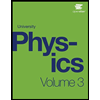 University Physics Volume 3PhysicsISBN:9781938168185Author:William Moebs, Jeff SannyPublisher:OpenStax
University Physics Volume 3PhysicsISBN:9781938168185Author:William Moebs, Jeff SannyPublisher:OpenStax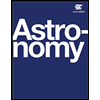 AstronomyPhysicsISBN:9781938168284Author:Andrew Fraknoi; David Morrison; Sidney C. WolffPublisher:OpenStax
AstronomyPhysicsISBN:9781938168284Author:Andrew Fraknoi; David Morrison; Sidney C. WolffPublisher:OpenStax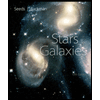 Stars and Galaxies (MindTap Course List)PhysicsISBN:9781337399944Author:Michael A. SeedsPublisher:Cengage Learning
Stars and Galaxies (MindTap Course List)PhysicsISBN:9781337399944Author:Michael A. SeedsPublisher:Cengage Learning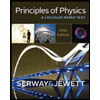 Principles of Physics: A Calculus-Based TextPhysicsISBN:9781133104261Author:Raymond A. Serway, John W. JewettPublisher:Cengage Learning
Principles of Physics: A Calculus-Based TextPhysicsISBN:9781133104261Author:Raymond A. Serway, John W. JewettPublisher:Cengage Learning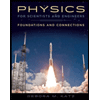 Physics for Scientists and Engineers: Foundations...PhysicsISBN:9781133939146Author:Katz, Debora M.Publisher:Cengage Learning
Physics for Scientists and Engineers: Foundations...PhysicsISBN:9781133939146Author:Katz, Debora M.Publisher:Cengage Learning

University Physics Volume 3
Physics
ISBN:9781938168185
Author:William Moebs, Jeff Sanny
Publisher:OpenStax

Astronomy
Physics
ISBN:9781938168284
Author:Andrew Fraknoi; David Morrison; Sidney C. Wolff
Publisher:OpenStax

Stars and Galaxies (MindTap Course List)
Physics
ISBN:9781337399944
Author:Michael A. Seeds
Publisher:Cengage Learning

Principles of Physics: A Calculus-Based Text
Physics
ISBN:9781133104261
Author:Raymond A. Serway, John W. Jewett
Publisher:Cengage Learning

Physics for Scientists and Engineers: Foundations...
Physics
ISBN:9781133939146
Author:Katz, Debora M.
Publisher:Cengage Learning
General Relativity: The Curvature of Spacetime; Author: Professor Dave Explains;https://www.youtube.com/watch?v=R7V3koyL7Mc;License: Standard YouTube License, CC-BY